PHP Free PDF Library
Read more at https://www.phpclasses.org/package/11976-PHP-Generate-PDF-documents-programatically.html#2021-03-02-04:37:59
A portable, open source C library that provides utility functions dealing with data structures, thread management, character set conversion, internationalization, and lots more, has been added to the Free C/C++ Libraries page. The library comes from the GNOME project, but is written to be independent of GNOME, and can be used on Linux, macOS, Windows and Unix-like systems.
When building a website, it’s important to find efficiencies wherever you can. Those little tricks that save you time without sacrificing quality are always welcome.
The WordPress Gutenberg block editor has plenty of hidden productivity gems built-in. Features such as keyboard shortcuts and UI enhancements that can help us get things done faster. They’re especially nice for those menial tasks like duplicating blocks or repositioning them to fit a particular layout. But that’s only the beginning.
Of course, the editor continues to change. New features are being added while usability has also seen significant improvements. The tough part for users is that some of these items are released with little fanfare.
Today, we’ll introduce you to four features that you can use to get your content-crafting projects done in record time.
Just like your favorite operating system, Gutenberg comes with some handy keyboard shortcuts. That’s a good thing, because using a mouse or trackpad to open up option menus can become tedious on large projects.
There’s even a keyboard short that will show display (you guessed it) the full array of available shortcuts: Shift + Alt + H

Among the highlights:
Ctrl + Shift + DWhenever you need to use more than one instance of a particular block on your page, this one will save tons of time. For example, it’s great for adding multiple rows of columns or separators that you want to spread throughout your content.
Ctrl + Alt + T or After Selected Blocks Ctrl + Alt + YSometimes it takes a bit of cursor gymnastics to place a new block just above or below your current position (although we’ll talk about that in more detail below). These shortcuts will help you add blocks without interruption.
Ctrl + SJust like your favorite desktop apps, saving changes to a page or post is only a shortcut away.
Ctrl + ZAnother favorite of desktops, this one will erase that last “oops” moment.
When crafting the perfect page layout, there might be times when you need to move multiple consecutive blocks to a new spot. Thankfully, you won’t have to waste time moving each block individually. Instead, there’s a way to select the blocks you want to reposition and place them wherever you like.
To do so, click into the first block you want to move and hold down the Shift key. Then, click on the last block you’re looking to move. This will automatically select all blocks within the range.
From there, you can use the up or down arrows within the dialog to move your selection. For big moves, you can also click on the drag blocks button (the six “dots” to the left of the up/down arrows).
There are a lot of WordPress websites out there still utilizing the Classic Editor or a page builder plugin. The process of switching to the block editor often requires rebuilding any custom page layouts. However, working on the “live” version of the page isn’t the safest option.
The Gutenberg code editor allows you to easily move your new layout from a test page to the “live” version. Here’s how it works (be sure to back up your content first):
1. Create a new page that uses the block editor. Then, build the page to suit your needs.
2. Satisfied with the page you’ve built? Now, you can copy its layout and contents.
On your new page, open up the Options panel (a three-dotted icon on the upper right of the screen) and select “Code editor”. You can also use the keyboard shortcut: Ctrl + Shift + Alt + M
Click into the Code editor. From there, select all of its contents (Ctrl + A) and copy them (Ctrl + C). You might want to paste the code into a text editor for safe keeping.
3. Next, open up your existing page (the one you want to replace). Make sure it is using the block editor (if you’re using the Classic Editor plugin, you might have to click the “Switch to block editor” link on the right side of the screen).
4. Just as in step 2 above, open up the Code editor. Remove all the contents on your existing page and paste the contents (Ctrl + P) from the new one you created earlier.
5. Click the Update button and your new page layout will be in place!
Selecting a specific block within a nested group using your mouse can be frustrating. For example, picking just one column in a row or even selecting the entire column block. You have to click in just the right place.
There is a much simpler solution. The block breadcrumbs that are tucked away at the bottom of the screen is all you need. It displays a complete hierarchy of the group’s structure.
To use it, click anywhere into the group of blocks in the editor. Then, find the exact one you want to select within the breadcrumbs below. Click on the desired block in the hierarchy and it’s yours to edit.
Alternatively, you can also use the “List View” (an offset “hamburger” icon on the top left of the screen) to see a complete listing of blocks used on a page. Find the one you want to edit and click on it. Easy!
Yes, the block editor is still evolving. But we’re finally at the point where things have stabilized quite a bit. That makes it a viable option for just about any WordPress website. It also means that content creators will need to level up their proficiency.
One of the best ways to do that is to avoid the point-and-click approach to building layouts. It can be both frustrating and a waste of precious time. Through the use of keyboard shortcuts and some handy UI features, there are now more efficient ways to get things done.
The tips above will get your journey off to a great start. Use them to cut down on build time and to accomplish more with less effort.
The post Tips to Help You Power Through Projects with the WordPress Gutenberg Block Editor appeared first on Speckyboy Design Magazine.
Gamers need logos just like every professional athlete. After all, there’s a reason why we call the field eSports. However, there’s a specific aesthetic attached to logos for gamers. From bold and bright colors that stand out on your garden variety mobile and desktop screens, to archetypal figures explaining what the team or the gamer is like, there’s plenty to keep an eye on.
So yes, coming up with logos for gamers can definitely wear out a graphic designer. Fortunately, we’re here to help! We’re going to show you a stunning collection of professionally designed logo templates for gamers. There are logos for streamers and individual athletes who want to flaunt their brand, and perhaps even use it for their merchandise later on to keep the buzz going. Working with an eSports team? Help them show their colors and spread the word with an engaging and fun logo that eSports fans are going to love! Clans? Fans? Not a problem! There’s really something for everyone.
And if you find yourself working with gamers and eSports teams often, you’ll even find gaming logo template collections that you can easily add to your design kit and get to work as soon as you get an inquiry from a gamer. “Winner winner, chicken dinner” isn’t just for gamers who love PUBG. With these gaming logo templates, you’re going to be the real winner. Press play to start!
Sleek and dynamic, this ninja assassin logo template for gamers is perfect for gamers who love their first-person shooters and always demonstrate incredible dexterity. This logo gives every gamer’s brand a suave look that shows they know their way around a stealth quest. It’s fully customizable!

If you’re working with an eSports team that specializes in FPS or other shooter games, they’re going to love this eSports logo template! Featuring the cool ninja mascot, with a bold color palette composed of reds, greys, and blues, this logo is definitely a powerful choice.
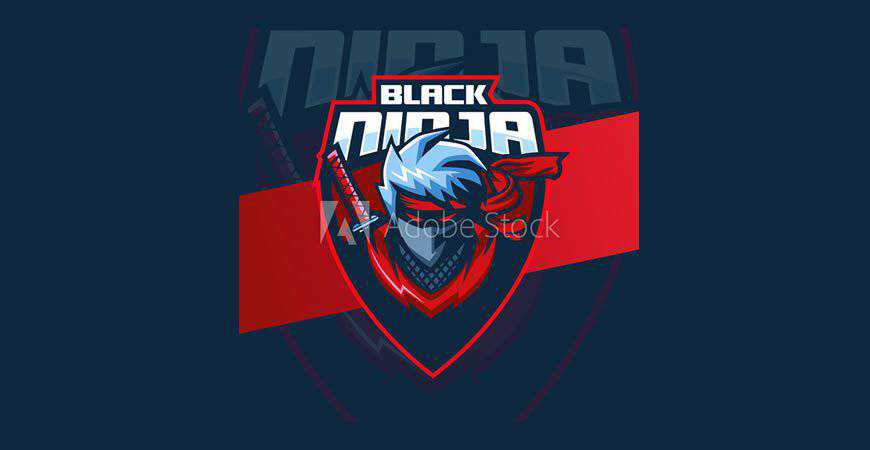
If you’ve got a great eSports team on your hands or a distinguished streamer, you’re going to need an amazing logo. Enter: this retro futuristic gamer boy mascot logo template. This logo is perfect for building a powerful personal brand and looks great on merch, too!

Powerful and futuristic, this logo template for gamers features a ninja in armor. It’s perfect for stealthy streamers and even eSports teams that want to rally audiences around their brands. You can completely customize this exciting logo template in Adobe Illustrator, and make sure everyone remembers the name.
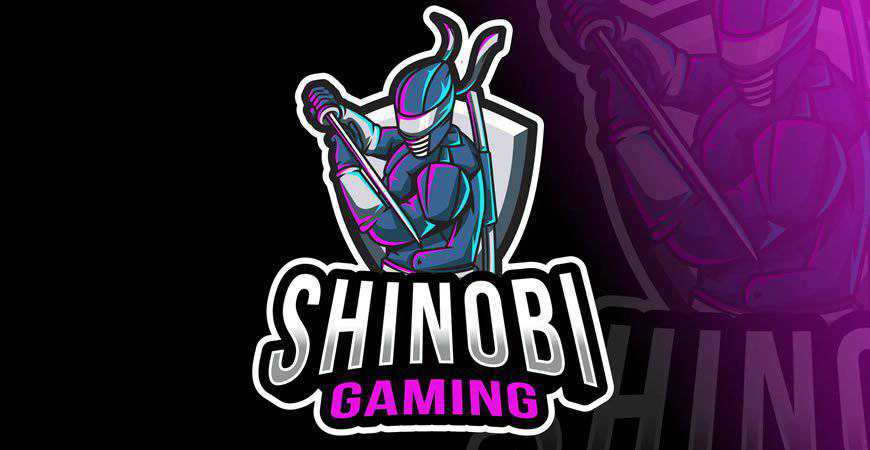
Help your client’s viewers relate to them with this exciting and modern gamer logo template. It’s perfect for streamers who want to build a personal brand, although it works great for pro players, as well. The color palette and typography choices give this logo incredible movement!

Help the fans show some team spirit with this exciting werewolf eSport logo template! This logo, with a blue and orange color palette, is perfect for teams that are ready to make bank at their next competition. You can easily customize the text and the colors in the Adobe suite.

Modern and unique, the Roboto gaming mascot logo template is definitely one of a kind! It plays with a variety of bold stylistic choices; from the interesting pose of the robot mascot, to the dynamic gradient typography. It’s perfect for eSports squads that want to get more hype.

Dark and powerful, this dragon eSports logo template is perfect for the teams who know they’re the rulers of every game they choose to play. This logo exudes confidence and power, so it’s going to be a great fit for logos, merch, and other branding materials.

If your client is always the gamer who comes out on top, show it with this hunter eSports logo template for gamers. It display a hunter gearing for a fight in the standard Call of Duty colors – black, grey, and white. This logo also works great for Twitch streamers!
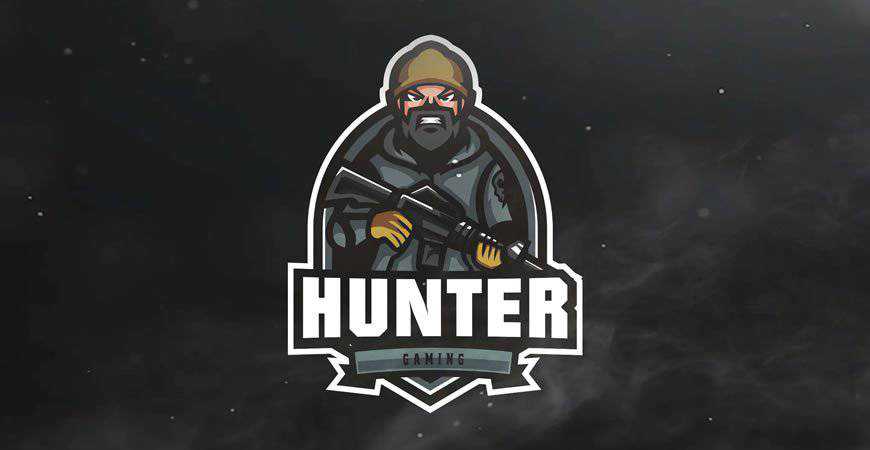
Working on a logo for an eSports team? Check out this template! It’s the perfect option for teams that provide strong support and powerful offense. With an illustrated hand grabbing for the controller, it’s perfect for teams that compete in console multiplayers like Call of Duty.
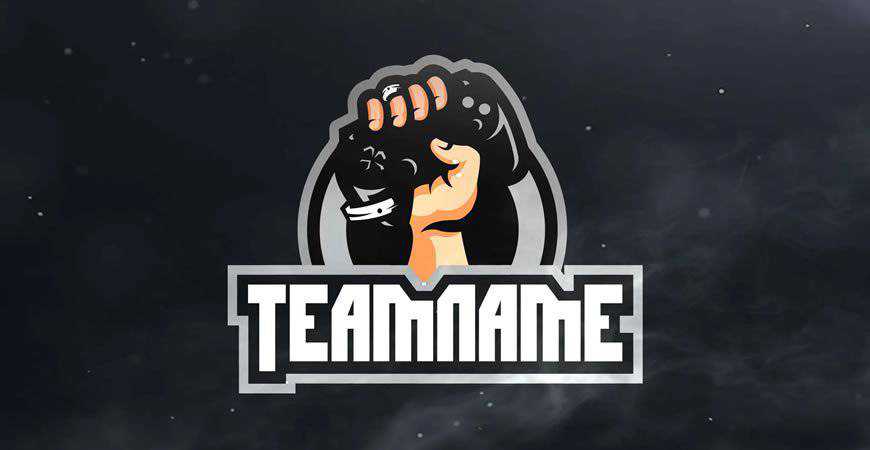
If you’re working with an animated and dynamic streamer, they’re going to love this logo! This fun logo showcases a gamer experiencing the thrill of the fight, and instantly gives off an engaging vibe. This gaming logo template works best for lone wolf players and streamers.

Gaming fans who see this logo are bound to start cheering for the eSports squad sporting it! A combination of eerie and exciting, this samurai logo template is perfect for teams who take pride in the quality of their achievements and their stealth. You can customize it in Adobe Illustrator!

Looking for a great sports logo template for gamers? You’ve just found it! This sports logo is perfect for gamers who love feeling like they’re on the field even when in their living rooms, and it’s sure to rally loads of support around them.

Perfect for streamers, this logo template for gamers features a skull with headphones on. The illustration’s style is very fun and engaging, so it’s perfect for gamers who are ready to launch their first merch line. You can easily customize the logo to fit your client.

The agility of a stealth op, with the character of PewDiePie… This logo template tells a story, and it’s perfect for both streamers and teams! It’s versatile so it works for all kinds of purposes, and you can easily customize this logo for gamers in Illustrator.
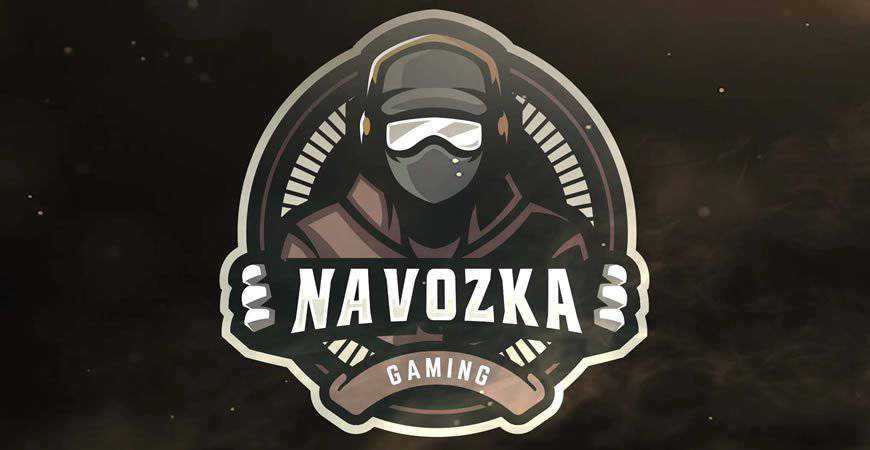
Show everyone how great troopers can be in a battle (contrary to the Star Wars stereotypes) with this cool eSports logo template. This logo for gamers features a trooper helmet with a white, dark blue, and electric blue color palette. It’s definitely a powerful, on-brand choice for gamers.

Wild and engaging, this gamer logo template is perfect for streamers who don’t mind hosting let’s play sessions with folks all over the world. This is a great logo template for gamers, and your clients can easily grow with branded merch and other products later on.

If your clients love ninjas, but they don’t want to be too on the nose about it, this logo is perfect! It offers a new take on the popular ninja symbol in gaming, and an engaging typography and presentation style. The logo is fully editable in Adobe Illustrator.

If you’re working with a client that wants to both emphasize her skills and her femininity, consider this logo. This wonderful logo offers both the enthusiasm of standard gaming logos, while also presenting the audience with a cute (and amazing) gamer girl illustration. It’s a win-win!

Keep it simple and fun with this gamer boy logo template for gamers, streamers, and squads. If your client is ranking high in the leader boards of their chosen game, they might want a logo that emphasizes their passion. This loud and bright logo is a great and memorable choice.

Give your client the awesome Red Dead Redemption vibe with this cowboy gamer logo template. It’s great for streamers, as well as eSports squad that aren’t afraid to give their audience the yee to their haw’s. You can easily customize it in Adobe Illustrator!

VR is pretty innovative so if that’s the road you’re following, you’re going to need an innovative logo, too. This logo template for gamers showcases an illustration with gradient VR glasses, and typography that follows the same style. It’s an amazing choice!
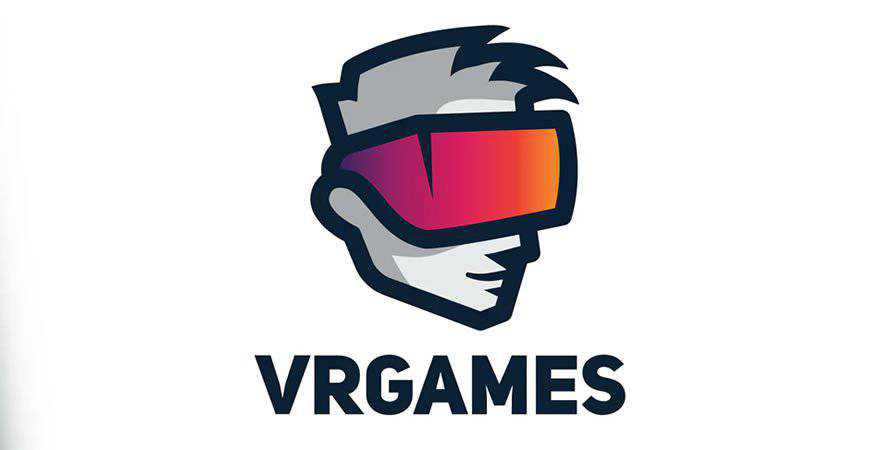
Behind a cute exterior lies a personality ready to take on any opponent! If that describes your gamer to a T, it’s time to consider this panda gamer logo template. Showing an enraged panda with a soccer ball, this logo template is perfect for competitive sports game players.

If your clients love retro consoles and handheld gaming, they’re going to love this logo with retro arcade typography. Inspired by some of the most popular retro gaming design projects, this logo is fun, engaging, and perfect for creating a whole community of video game fans around it.

The best gaming logos show the gamers’ personalities, and this one is perfect for squads and teams that love communicating with their loyal fans. Modern and minimalist, this gaming logo works like a charm for a variety of purposes. It can represent an eSports squad, or a gaming-related project.
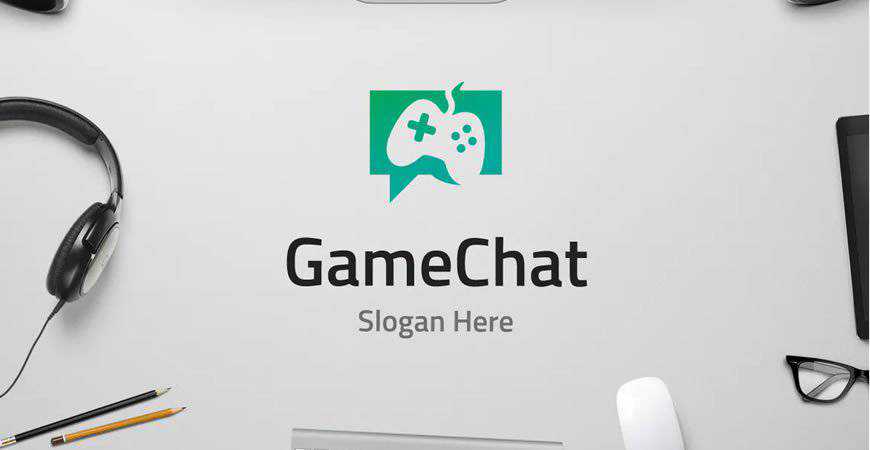
If you often work with gamers who love old-school cool kind of style, then you need this gaming logo collection in your kit! You’ll get 16 logo templates for gamers inspired by vintage typography and visuals, with contemporary dynamism perfect for projects, squads, streamers, pro players, and more!

If you need a professional logo for gaming studios, developers, or other professionals in the gaming industry, this template is a great fit. It combines the image of a console with the infinity sign, and expresses movement through dynamic palettes. You can easily customize it in Adobe Photoshop or Illustrator.

This colorful and vibrant gaming logo template is perfect for video game developers and studios that want to attract new fans to their projects! Featuring a cute console controller with minimalist sans-serif typography, this gaming logo template will definitely amaze your customers and make everyone want to play their games!

Nothing beats the charm of neon! And if you’re working with vibrant clients who want to entertain their audiences, make sure you add this collection of 8 neon logo templates for gamers to your kit. These unique logos feature motifs such as: handheld controllers, arcade machines, and more.

Create an engaging and versatile logo for game developers and studios with this gaming logo template. With an interesting rendition of symbols seen on console controllers and gradient typography options, this logo definitely showcases professionalism. You can easily customize it to fit your clients’ brands in Photoshop and Illustrator.

This is the only ‘game over’ we ever want to see! This fun logo template for gamers features a skull with console controller buttons for eyes, and a bold sans-serif heading. It works like a charm for individual players and streamers, as well as game developers and studios.

Give your clients more options with these vintage-inspired gaming logo templates. This gaming logo collection features 9 gaming logos perfect for gaming projects, tournaments, communities, and similar initiatives. From skulls, to console controllers catching fire, these logos radiate charm. You can easily customize them to fit your clients’ brands!

If you’re not looking to school your customers in PVP, and you actually want to educate them, you’re going to love these gaming academy logo templates! This gaming logo pack includes 6 professional logo templates that you can easily customize and use for your gaming courses.

If your gamers are known for playing mystery games or escape room games, they’re going to love these logos. Inspired by traditional mystery motifs, these logo templates for gamers are vibrant and engaging. Help your clients leave the right first impression, and draw more fans into their mysteries!

Create a professional foundation for your gaming brand or project with this digital gamer logo template. It features a pixelated-style illustration and a modern, sans-serif headline. You can easily customize this logo to your liking in Adobe Illustrator. It’s sure to help you leave a great first impression!

Make your retro gaming project more recognizable with these retro gaming club logo templates. Inspired by the 80’s game arcade style in both typography and illustrations, these logos have a particular charm to them, and they’re a bold choice for gamers who love old school cool.

If your clients prefer creating video games to playing them, they’ll love this gaming logo template. This two-tone logo template features console controller symbols, and room for your brand name and a slogan. It’s perfect for gaming studios, developers, and other projects in this vibrant industry!

Make the most of the 80’s video game aesthetics and modern ways to kick some serious tooshie with these logo templates for gamers! They’re perfect for individual players, as well as squads and other projects like communities. Retro’s going to make a major comeback!

Fully editable and professional, this logo template showcasing a console controller is a perfect fit for video game developers or development studios. Your branding will be elevated with this beautiful rendition that both connects you to your gaming roots, and signalizes innovation to everyone who sees it, gamer or investor.
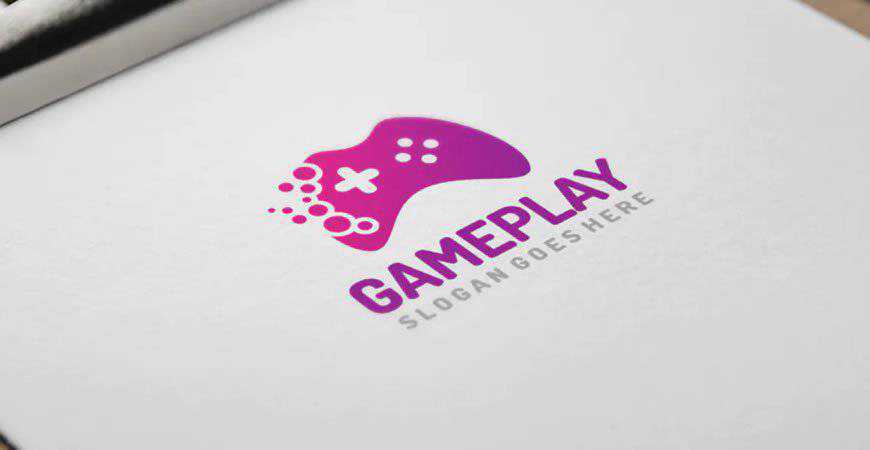
Perfect for gaming logos, merchandise, and a lot more, these gaming templates are stunners! The illustrations will throw you back to the ‘80s (in the best possible way) with vibrant colors and motifs such as dinosaurs and consoles with bold typography. These designs are great for communities and apparel!

Minimalist and abstract, this gamer logo template is really unique. It’s also incredibly professional, so it’s a great fit for gaming projects, developers, studios, and more. It features an abstract illustration of hands and a console controller, and you can easily customize it in Adobe Illustrator.
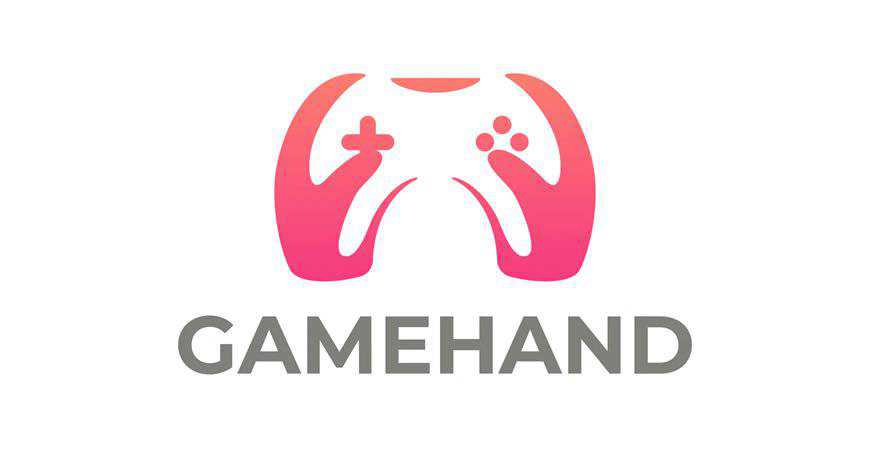
Hello, retrofuturism! This stunning gaming logo template collection features 4 neon logos with both classic gaming and virtual reality gaming motifs. These logo templates for gamers are a great choice for bold gamers who aren’t afraid of exploring new frontiers, and they look amazing with darker color palettes.

Eat, sleep, game, and repeat! Help your clients show their style in the best possible way with these dynamic and fun logo templates for gamers.
All of these templates have been made with gaming aesthetics in mind, so you don’t have to start from scratch or conduct dozens of hours of competitor research to make sure you’re on the right path. Instead, all you have to do is find the right gaming logo(s) on this page, and add them to your design kit.
Your clients will love it, and so will their fans. Who knows? Maybe one of these days, you’ll see the logo you designed on your client’s Twitch merch! So bookmark this page, download the templates that suit your client’s style, and get to work. All it takes is a few clicks and you’ll be set!
The post 40 Professionally Designed Logo Templates for Gamers appeared first on Speckyboy Design Magazine.

Sushi has been popular in the Western world since the 1970s, when it was introduced to diners in the U.S. You probably have a strong opinion about it – either you love it and are always looking for ‘the best’ sushi in your neighborhood, or you absolutely hate it and can’t understand how anyone could go near it, much less put it in their mouths.
Personally, I’m in the ‘love it’ camp, and today I’m going to share with you six ways that you can leverage the power of sushi to improve your designs. Yes, really!
Traditional sushi chefs in Japan are known for chatting with their customers at length about the local ingredients so essential to their cuisine. If you sit down at their restaurants, they will regale you with stories about the work they do, informing you and engaging you at the same time.
Restaurants are social environments – we go out to eat when we could easily stay in because we want to be around other people while we enjoy a (hopefully) delicious meal. People, like this guy, have since turned this traditional, sociable behavior into an international legend, comparing every sushi experience to the pleasant, informative one they had in Japan.
As a designer, you too can leverage this narrative power when you engage your clients. People respond well to storytelling – it makes you stand out from the pool of other designers who never use this tool.
Make sure you have a story to tell about your work. Do personal projects you love, and make a habit of explaining your unique and fascinating process to potential clients. They’ll definitely be interested as long as you keep it brief.

For many Japanese people, eating a little raw fish with rice is a complete meal. The story you tell with your work need not be complicated or overly dramatic. The more you simplify your process, the easier it will become, and the more work you’ll be able to accomplish.
Take writing this article, for example. If I hadn’t started out with a process to keep things simple, I would have spent far too long going into details that aren’t necessary to tell the story.
Simplifying your process isn’t easy, but once you develop your own system for tackling your work, it will definitely make your life much less hectic.
Originally, the rice in sushi served a very specific purpose – to keep the fish preserved as it traveled from the fishing docks to the fish markets. To accomplish this, the rice was fermented and consequently had a very strong flavor that few could stomach.
It was traditionally discarded until the 18th century, when people began reducing the fermentation levels and including it as part of the actual dish. Now, sushi rice is the most common ingredient in most types of sushi. Making the rice part of the flavor profile opened up a whole new range of possibilities for flavor combinations.
Coming up with a function, or a solution to a problem you didn’t even know was there is a crucial part of design. Imagine if chefs still threw away their sushi rice before they served you your meal. We’d be missing out on so many different types of delicious sushi – nigiri, temaki, gunkan, and all those delicious rolls we Westerners love. How sad would that be? Good thing someone figured out how to prevent this tragedy from happening.
As a designer, your job is to navigate uncharted territory, making use of things that others miss or overlook. Have a bunch of throw-away supplies, research, or junk mail staring you in the face? Look at it again with new eyes and see if you can’t create a ‘sushi rice’ moment of your own.

Because they work with raw fish, which can contain harmful microorganisms, professional sushi chefs are specially trained to pay attention to certain characteristics of the fish that most commercial inspectors don’t bother with. Things like the smell of the fish, its color, firmness, and sterility are examined much more closely to ensure a safe dining experience for their patrons.
Designers can learn a lot from this ultra-specific attention to detail. As you are a decision maker, expected to come up with solutions to your clients’ problems before they even realize the problems are there, you need to learn how to think like a sushi chef and closely examine your designs for tiny flaws that others might not see.
Be relentless; weed out whatever doesn’t belong and don’t be satisfied until you’re sure you can present your clients with the absolute highest quality designs you can possibly create. This does two things: one, it puts more awesome design in the world (and who doesn’t need more of that?), and two, it signals to your client that you are different from all the other average designers out there who just turn in work that’s ‘good enough.’
The reasons for inspecting sushi and sashimi ingredients aren’t all dire and health-related. Fish used for sushi and sashimi is also inspected for its visual appeal. Only the most attractive and flavorful cuts of fish are used, and great care is taken to make sure the beauty of the fish is retained once it arrives on your plate.
More creative chefs have signature styles of presenting their sushi – things that make their dishes unique to them and which inspire a mythology among their customers. Does that remind you of anything? Sushi is definitely a designed product, from inspection to presentation.
In fact, I can’t think of another traditional food that incorporates more conscious design into every aspect of its creation than sushi. Everything from the way sushi chefs select their ingredients, to the way they proudly tell you about them at the restaurant is a carefully orchestrated production – almost a performance.
You can definitely harness this process for yourself in your design work, and create a similar production experience for your clients and your users. When you develop your own unique production style, clients and users will take notice, and your work will take on a life of its own in the stories people will tell each other about it.
You want those stories – that mythology – to take root. It’s the single most important part of your reputation as a designer. What people say about your designs, and how they say it, is vital to getting the best clients. Plus, you can actually influence people’s opinion of your work based on they mythology surrounding it.
People are more likely to respond positively to design that has a good mythology, than to design that has little to no mythology.

In the West, we don’t really pair unremarkable cereal staples with other, much more flavorful dishes. Except for pasta, which, of course, comes from Asia and is traditionally made from…rice. Go figure. But in Asia, chefs and cooks do this all the time. Rice is used as a palate cleanser and a kind of ‘shock absorber’ for the spicy and flavorful foods it normally accompanies.
Sushi is no exception. I suspect the reason Japanese cooks began including rice in their sushi dishes was that they wanted to experiment with different types of flavors for the fish – flavors that would be a bit too strong if consumed by themselves, without the rice as a ‘buffer.’
When you employ this practice in your designs, you are having the same effect on people’s eyes and brains that sushi has on their palates. Simplicity paired with tiny moments of intense detail or “flavor” is a philosophy you can use to create designs that are intriguing and unexpected.
How else can you draw design inspiration from sushi? Could you really, really go for a Hawaiian roll right about now? I know I could…
The post Leveraging the Power of Sushi to Improve Your Designs appeared first on Speckyboy Design Magazine.
In this episode, Josepha Haden Chomphosy speaks to her role as the Executive Director of WordPress. Learn about the day-to-day of her role and how it supports the mission of WordPress.
Have a question you’d like answered? You can submit them to wpbriefing@wordpress.org, either written or as a voice recording.
Hello, everyone, and welcome to the WordPress briefing, the podcast where you can catch quick explanations of some of the ideas behind the WordPress open source project and the community around it, as well as get a small list of big things coming up in the next two weeks. I’m your host, Josepha Haden Chomphosy. Here we go!
I’ve been asked many times what the day-to-day work looks like for the Executive Director of the WordPress project. I don’t really think I’ve done a great job of answering that question. My default answer is either too broad, and I say, “I helped turn the WordPress vision into reality by supporting the community of contributors,” or way too narrow, and I start telling people what’s on my calendar. Probably no one cares about each entry on my calendar, and almost every contributor is covered by “I get things done by helping people.” So today, I invite you to join me in exploring the type of work required and the balance it takes to keep WordPress working.
First, some context on the weekly activity I see in WordPress, on average, 1,800 to 2,000 contributors a week, participate in conversations and tickets across the entire WordPress project in our entire ecosystem. There are about 20 volunteer teams that are each led by two to three team reps. Each of those teams actually has smaller groups that work on specific things; all told, it’s probably about 50 distinct teams. And probably quite a few more if you are very generous in your counting about what makes up a team for us.
Among those teams, a minimum of about 35 meetings a week are held, plus more for working groups. That doesn’t take into account the things most people are aware of externally. It doesn’t take into account the big quarterly or annual activity things like WordPress software releases or any of our events. When those sorts of things do happen, there’s a bit of an increase in our activity.
I work 40 to 60 hours a week on WordPress, depending on what’s going on, to make sure that I know what’s happening now; so that I have insight into what the next three to five years will bring. All of that is in support of the WordPress community, which I define as anyone who has ever interacted with WordPress ever, regardless of whether they know it or not. In case you’re feeling a bit lost right now, we can shorthand that entire context as this is really big and really complex.
Given that giant scope, it makes sense that people wonder what the work looks like. So I’ll talk about it in three big chunks: what I focus my time on, what I focus my attention on, and what helps me balance my decisions.
So first, what I focus my time on. I spend about a quarter of my time in meetings, mostly with current contributors, project leadership, and community members. I spend another quarter of my time in WordPress community outreach, checking in with current folks, reaching out to future WordPressers, and checking in with people that I haven’t heard from in a long time to make sure that I know what they need and if there’s anything that I can do to help. After that, I spend a bit under 15% of my time each on writing/communications work or ad hoc project work. I then spend 10% of my time reviewing proposals, editing, communication drafts for others, and determining my stances on discussions that we’re having in tickets and elsewhere. I spend all of my remaining time planning for various goals, projects, initiatives and personally working to remove blockers for our volunteer contributors. So the bulk of my time, about 50% or more, is spent in calls with people, which makes sense if you’ve ever worked with me; personal connections with the community have been the best part of my job for a long time. Since the community is what makes WordPress so great, it’s only natural that I want to stay connected.
The second big chunk is what I focus my attention on. I pay attention to four big pillars of work in the project. The first one is the WordPress CMS itself. So that’s the core team, accessibility, design, and many, many others. The second one is the WordPress community. And that’s the training team, everybody who is working on the Learn initiative, and the actual community team as well.
The third big pillar that I focus on is the WordPress contributor experience, which is mostly the meta team but includes all of the teams they work with: plugins, themes, polyglots, etc. The fourth big pillar that I turn my attention to is our communication; what I am saying about the WordPress project to people outside of it and what I am helping our team reps to say about the work that we’re accomplishing for the WordPress project inside the project. In general, we have to make sure that we coordinate a big group of contributors around a common idea or a common practice as we move forward.
Now, the way I focus both my time and attention probably isn’t quite right if you’re focused on a single feature or team. And it’s definitely not right if you aren’t spending 40 hours a week in the project; what that probably looks like for you is more like an hour in a team meeting, 30 minutes or so on clarifying conversations, and any remaining time that you are able to contribute focused on the feature that you’re actually contributing to. And so, there you have it all my time and attention. That is WordPress in a nutshell.
This brings us to the third chunk, the balance part. You might be wondering, how do I make sure I am fair and balanced in decisions that I have to make. That is something that I think about all the time, and I take very seriously. It’s hard to make decisions that might affect 2,000 people. It’s even harder when those decisions might affect 40% of the web. I know that I don’t have all the answers. And I’m fortunate enough to have 50 or 60 people in the community who offer me advice and guidance every single week. I’m in constant contact with the project lead, of course, but I also prioritize messages and concerns raised from team reps. And I always strive to understand before I try to problem solve. I don’t always get it right, but I do always work to get better. And that is the day-to-day work of a WordPress executive director.
That brings us to our community highlight. I tweeted out into the community asking for excellent examples of Freelancer success stories, and today I’m going to share a story from Arūnas Liuiza. Their story goes like this:
“For almost a decade, freelance WordPress gigs allowed me to support myself and my family and keep my full-time teaching position at the local college, which was paying peanuts but was an awesome, meaningful, and fulfilling. I am sincerely grateful for that.”
That brings us to our final segment of this brief podcast. The small list of big things to keep an eye out for in the next two weeks in WordPress. I only have two things this week. The first one is daylight saving time. It is that time of year where daylight saving time starts or stops at various parts in the globe. If you are a team rep here at WordPress, don’t forget to talk to your teams in your meetings in the next few weeks to decide what you’re going to do. You can move your team meeting if you want, and you can keep it where it is and see what new voices show up when it moves around for various people. Either way, make sure that you chat it out with your team and make sure that everybody understands what is and isn’t moving on your calendar. That will also be relevant to any of our brand new work-from-home folks in the middle of this global pandemic.
The second thing to share is that there is a major release of WordPress coming up that’s going to happen on March 9th. It’s WordPress 5.7; it’s going to be a good release. We’ve been working on it since December or maybe a little bit earlier. So keep an eye out for announcements about that here on wordpress.org/news, or if you want to follow more about the developer details and the process details you can head on over to wordpress.org/core. That, my friends, is your small list of big things. Thank you for tuning in today for the WordPress briefing. I’m your host, Josepha Haden Chomphosy. I’ll see you again in a couple of weeks!
